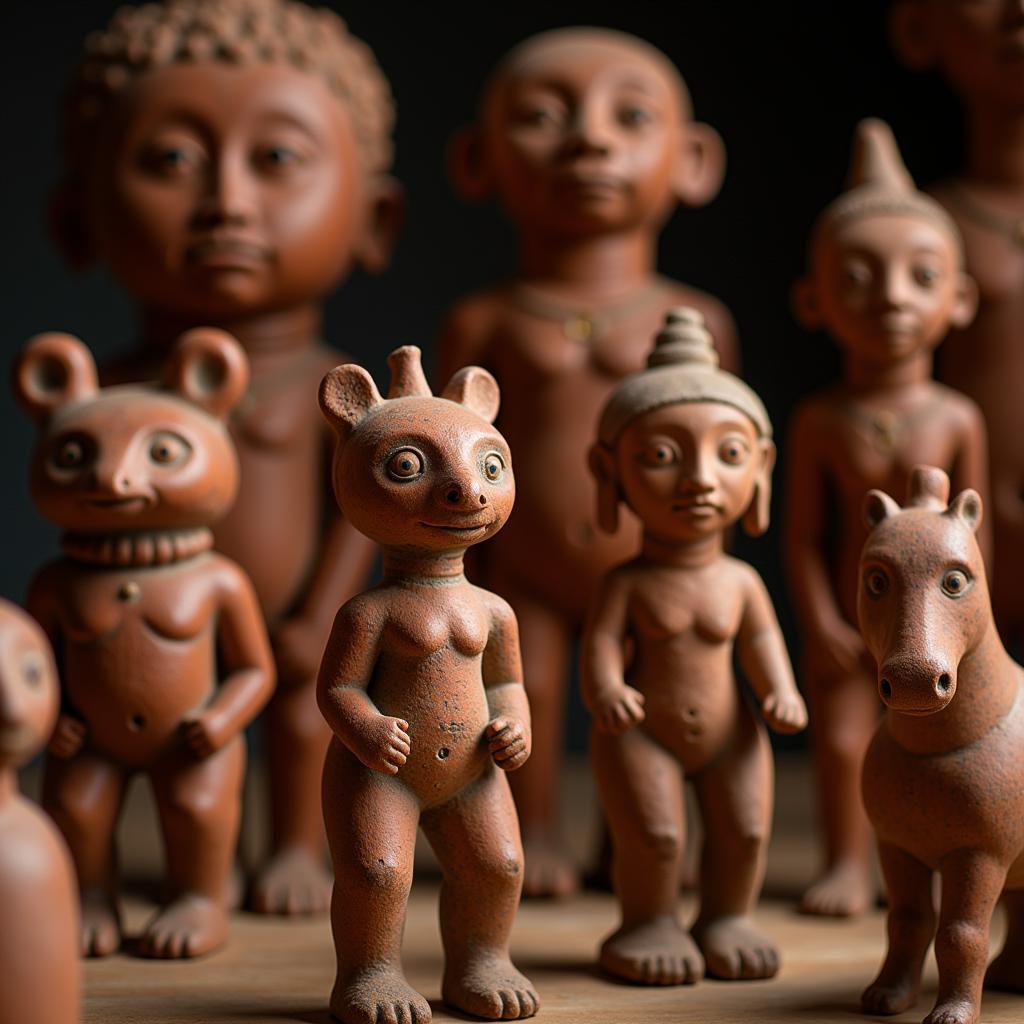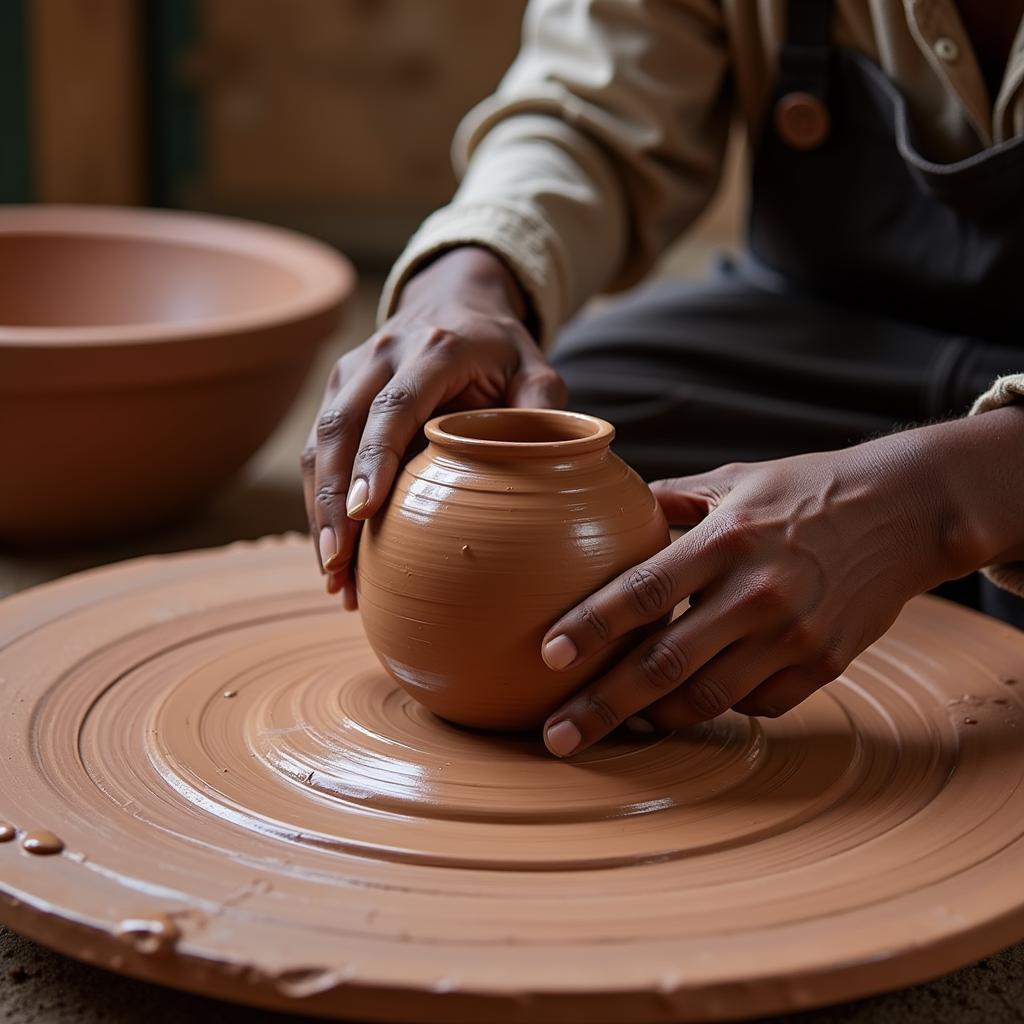Unearthing Tradition: The Art of African Earth Pottery
African Earth Pottery, a testament to centuries-old traditions, embodies the very essence of the continent’s rich cultural tapestry. More than just functional objects, these earthenware pieces are expressions of heritage, artistry, and a deep connection to the earth. From the rustic charm of hand-built vessels to the intricate designs adorning ceremonial pots, African earth pottery offers a captivating glimpse into the diverse cultures and artistic ingenuity of its people.
A Legacy Molded in Clay: The History of African Earth Pottery
The origins of pottery in Africa can be traced back millennia, with archaeological evidence pointing to its existence during the Neolithic period. Across the continent, various cultures developed unique pottery traditions, often passed down through generations of skilled artisans. In regions like the Maghreb, the art of pottery arrived with the Berbers, who honed their craft over centuries, creating distinctive geometric patterns and intricate designs. Similarly, in West Africa, the Nok culture, known for its terracotta figurines, showcased an early mastery of clay as a medium of artistic expression.
 Ancient African pottery terracotta figurines
Ancient African pottery terracotta figurines
From Earth to Artifact: The Making of African Earth Pottery
The process of creating African earth pottery is a testament to resourcefulness and tradition. It begins with sourcing suitable clay from local sources, often near riverbeds or other areas rich in sediment. The clay is then carefully prepared, removing impurities and adding tempering agents like sand or grog to prevent cracking during firing.
Unlike mass-produced ceramics, African earth pottery is predominantly hand-built. Techniques like coiling, pinching, and slab building are employed, with each region and culture having its own distinct methods. The absence of a potter’s wheel in many traditional settings further highlights the skill and dexterity required to create these unique pieces.
 African potter shaping clay using a traditional method
African potter shaping clay using a traditional method
Once the desired shape is achieved, the pottery is left to dry, often under the watchful eye of the sun. The final and perhaps most transformative stage is the firing process. Traditionally, open-air firings are common, using wood, dung, or other organic materials to fuel the flames. This method imparts unique characteristics to the pottery, with variations in temperature and atmosphere resulting in a spectrum of colors and textures.
Beyond Utility: The Cultural Significance of African Earth Pottery
African earth pottery transcends its functional purpose, serving as a powerful symbol of cultural identity and heritage. In many communities, pottery plays an integral role in daily life, from storing grain and water to cooking traditional meals. Beyond these practical uses, it features prominently in ceremonies, rituals, and celebrations.
 African ceremonial pottery with intricate designs
African ceremonial pottery with intricate designs
For instance, elaborately decorated pots are often used in wedding ceremonies, symbolizing prosperity and fertility. Similarly, certain vessels are reserved for religious rituals, believed to hold spiritual significance. The motifs and designs adorning these pieces often reflect cultural beliefs, ancestral stories, or significant events, serving as a visual language passed down through generations.
The Enduring Appeal of African Earth Pottery in the Modern World
In an era of mass production and disposable goods, African earth pottery stands as a testament to the enduring appeal of handcrafted artistry. Its unique aesthetic, characterized by organic forms, earthy textures, and intricate designs, has captivated art enthusiasts and collectors worldwide. The use of natural materials and traditional techniques resonates with the growing appreciation for sustainable and ethical practices.
Furthermore, the cultural significance embedded in each piece adds a layer of depth and meaning, transforming them into more than just decorative objects. By incorporating African earth pottery into contemporary spaces, individuals can infuse their homes with a touch of history, culture, and authentic craftsmanship.
Conclusion
African earth pottery, shaped by tradition and fired in the heart of communities, offers a captivating window into the soul of Africa. From its humble beginnings as a practical necessity to its evolution as a powerful form of artistic expression, this ancient craft continues to inspire and captivate. By appreciating the artistry, cultural significance, and enduring legacy of African earth pottery, we gain a deeper understanding and appreciation for the rich tapestry of cultures that grace the African continent.
